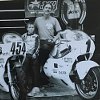Over the past decade, Ari Henning has made a name for himself as one of the premier content creators in the world of motorcycling. He started his career freelancing for Motorcyclist magazine before taking on a staff position and later working to expand the brand’s content to include videos. His move to Motor Trend saw him expanding the depths of what motorcycle content on the internet could look like. All the while he was constantly offering mechanical tips to his audience on Instagram while contributing a monthly repair column in Rider magazine.
While I had been familiar with Ari’s work since his early days at Motorcyclist, it’s only been in recent years that we’ve become friends. We met over cocktails at the Honda Rebel reveal party in Long Beach, California, in the fall of 2016. Along with Abhi Eswarappa, we spent most of the night sitting in a corner booth talking about motorcycles. And that conversation has continued for more than three years.
So for Season Two of our Highside/Lowside podcast, I figured we should bring some of that talk to the podcast. For Episode Five, I sat down with Ari to talk about riding and wrenching on motorcycles, as well as the content he’s created around them. To catch the full interview when it’s released later this week, type in “RevZilla” on Apple iTunes or your favorite podcasting app and subscribe to our Highside/Lowside podcast. The following is an excerpt of my interview with Ari.
Spurgeon Dunbar: You've built quite a reputation for yourself over the years, not only as a very talented motorcyclist but also as a skilled and thorough mechanic. What came first, riding motorcycles or working on motorcycles?
Ari Henning: I mean, certainly riding motorcycles. My dad was into bikes, so there were always motorcycles around as a kid. He offered one to me, a Z50, shortly after I could walk, just like a normal dad would maybe offer a bicycle. So, I've been riding on two wheels, honestly, as long as I can remember. The idea of fixing things, again, came from my father. He was an auto mechanic. He didn't graduate high school, he just kind of took care of himself and was an entrepreneur, made his own businesses. I was just instilled from a super young age that you can fix anything if you try hard enough.
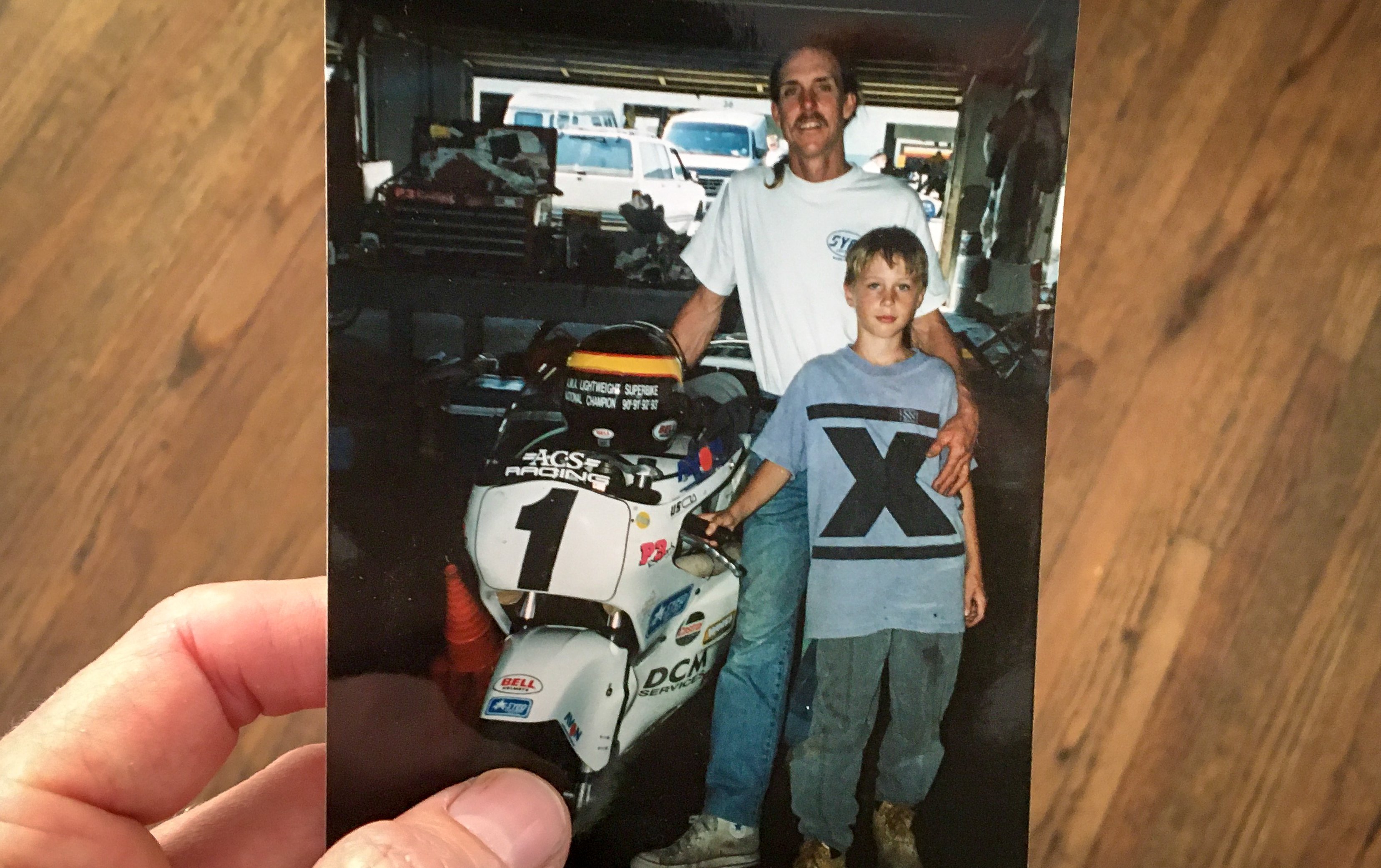
SD: Your dad, Todd Henning, was a notable figure in the motorcycle community, who really made a name for himself racing small-displacement Honda twins, along with developing really high-end parts for them. What kind of influence did your dad have on you when it came to two wheels?
AH: I mean, all the influence, honestly. We often talk about my dad kind of in past tense so people are often wondering if he's still with us. He is in fact with us, but he was injured pretty profoundly in 1999 in an accident that left him incapacitated to some degree. He's got permanent brain damage, but he's still with us, he's still fun to talk to, but he can't do a lot of the things he used to be able to do.
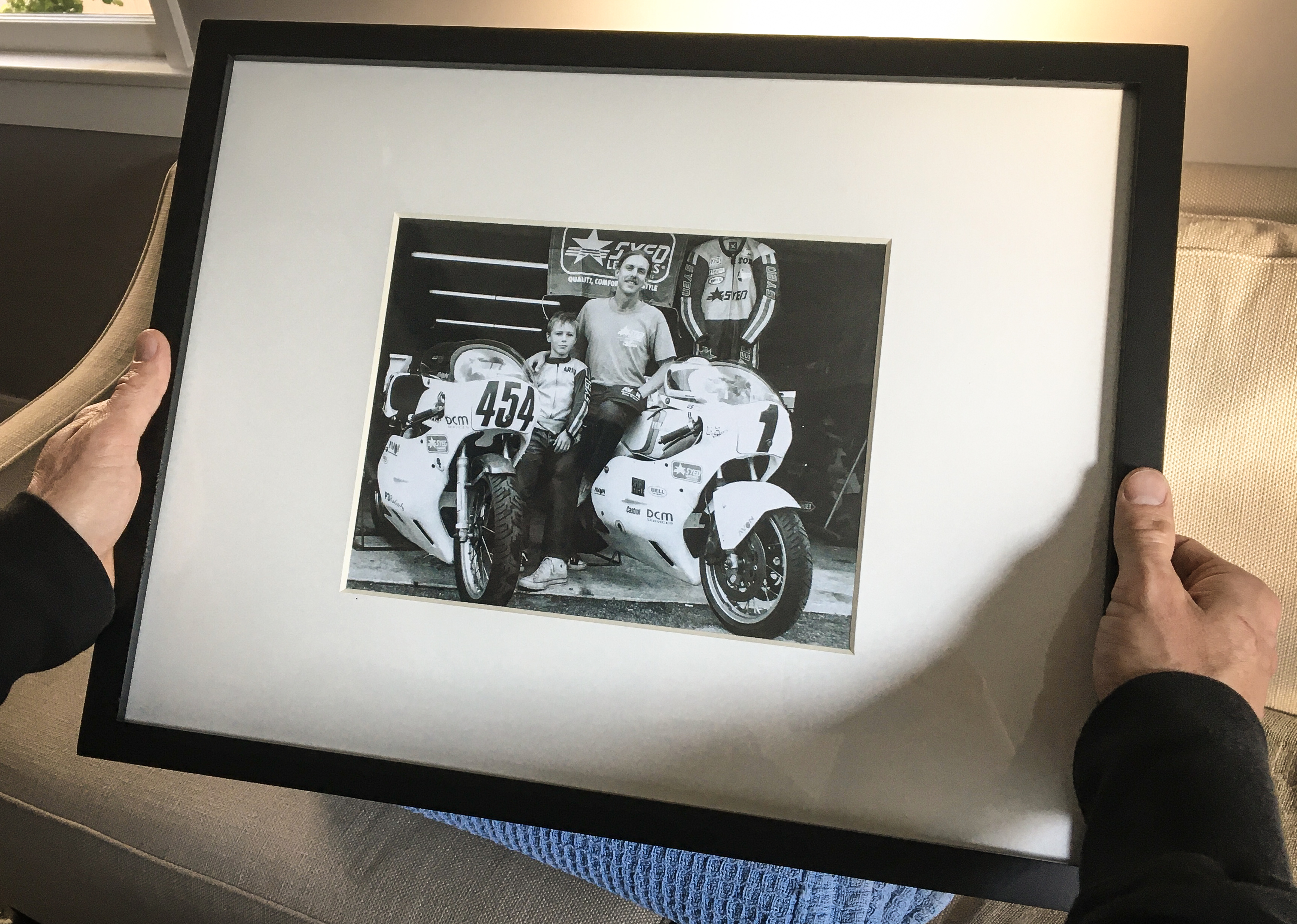
But that all happened when I was 13, and I think it's just amazing that through osmosis, he set me on the course that I've been on for the rest of my life without actively teaching me how to fix anything or without teaching me how to race a motorcycle. Those are all things that I just sort of gleaned from him, and knew that he could do, and knew that he did them with very basic resources of intellect, and desire, and tenacity. And I've managed to follow his path in a lot of ways, which is really satisfying considering his fatherhood, his influence over my life kind of ended when I was 13. But he sent me on a pretty powerful trajectory at a young age.
SD: Speaking of “young age,” even as a toddler he would take you out to the race tracks and that's actually where you met and befriended Zack Courts, is it not?
AH: Yeah. You know, in the late '80s and early '90s, parenting was a little different. I'd show up at the race track, and dad was busy racing six, seven, eight classes, so maybe 14 to 15 races a weekend. So, he'd basically fill the gas tank on my Suzuki DR100, give me $5 for lunch, and then say, "I'll see you tonight when we're packing up." So, I'd be on my own. And Zack's dad was very similar.
And so, Zack and I just bumped into each other on our pit bikes. I think it was in Loudon, and I think I was probably seven or eight. Obviously, another kid of approximately your age on a dirt bike, you're gonna be fast friends. So, our dads raced in a club that would compete in Canada and all up and down the East Coast, and my dad would go out to the West Coast. And Zack and I would basically just meet up at the race track. This was before the days of Facebook, before cell phones, so I didn't even call ahead or anything, I just knew he'd be there because our dads were obsessed and dedicated road racers. So, we had a lot of really rad adventures all up and down the East Coast.
SD: How did you get from the East Coast to the West Coast working for Motorcyclist magazine, which is really where you started making a name for yourself?
AH: When I was in high school, everyone was told that they needed to go to college, and I believed that was the course I should follow with my life. So I applied and got accepted. And then I got a letter mid-summer, being like, "You're accepted. Send us a check for $9,000 to hold your position." And I looked at my bank account, which had something like $6,500 in it, and was thought, "Well, those numbers don't add up." Growing up, my dad was a cash-only guy, so I didn't believe in really going into debt for things unless you really had to. And no one in my family had graduated college, so there wasn't a lot of impetus for doing that.
So, I said, "Screw it." and bought myself a Bandit 600 the spring of my senior year and rode down to Key West to visit a lot of family friends. And with that the touring bug bit me big time.
When September rolled around, I took the money that was in my bank account, and just hit the road, and spent six months and 20,000 miles just kind of fumbling around America, and ended up in California. And I loved it. I mean, you come across America in the dead of winter, and it's cold, and miserable, and I didn't have any heated gear, I was young and dumb. February in California was the most beautiful time of year here, and so I fell in love and decided that's where I wanted to be.
Before I left, I had actually reached out to Motorcyclist because that was the magazine on our kitchen counter growing up. My dad not only read it but actually contributed. He raced with Mitch Boehm who was the editor back in the '90s. He built a Drixton 450 for Mitch to race at Daytona, and I guess my dad made quite an impression on him because Mitch actually answered my e-mail. I was like, "Hey, I'm gonna do this cross-country trip," and when I got to Los Angeles, he invited me out to lunch.
We were talking about motorcycles in general, and he was kind of intrigued and inspired by my story. And he asked, "Have you been taking pictures? Have you been writing anything down?" And I had been, I'd been journaling extensively and taking a ton of photos.
That was late 2007 and I think the story was called "Rite of Passage," my first for the magazine. It was about my road trip and kinda connecting with the journey my father had taken because he dropped out of high school at 15 and rode cross-country on a CB450. Again, I was kind of following my dad's footsteps. And that trip taught me so much about myself, about the country, about ways people live, and the kindness of strangers, and it really inspired me to take a very different course of action than a lot of my classmates did by going to college.
SD: So, that article was actually written a few years before Zack Courts joined the masthead at "Motorcyclist". How did you and Zack reunite and start working together?
AH: My wife and I were living in Santa Cruz, I was racing a Suzuki SV650. And back then, they used to have a four-hour endurance race in the fall. And I remember looking at the entries and seeing the name Zack Courts, Boston, Massachusetts. I thought, "There's no way that's not the same Zack Courts." But again, this is before Facebook, I don't have his cell phone number.
So, I Googled him, and I found his name listed on a racing team. I think it was called "Not Half Fast," and they had merchandise for sale. They didn't have a contact number, they didn't have a contact e-mail, but they had a PayPal account and you could buy their stickers. So I bought a $3 sticker and with my 75-word comment space in the PayPal platform, I was like, "Hey, this is Ari Henning. I think Zack Courts is the same Zack Courts I used to know. I'm trying to get ahold of him." And it worked, they e-mailed me. I never got my damn sticker, by the way. I should probably get a refund for that.
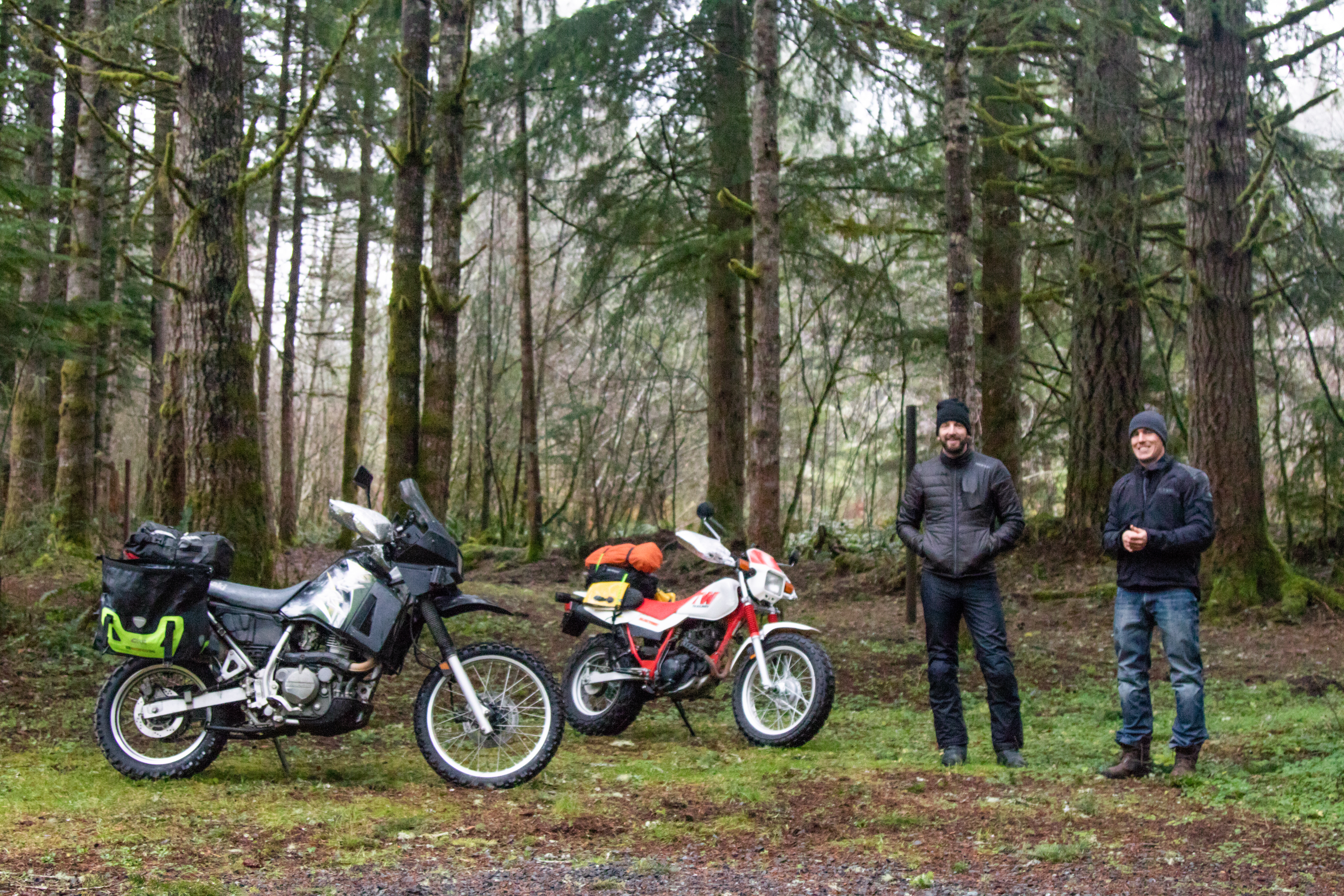
But that's how he and I got back in touch. And it turns out, he had moved to San Francisco, so we reconnected as friends almost 10 years since we had last seen each other, which was just amazing. And I thought it was really cool that our life trajectories had led us back to where we originally met, which was the race track. Entirely independently, we had both followed this path that took us back to road racing on our own account, which was so satisfying. it says so much about who we are.
SD: Out of all the wacky adventures that you and Zack have gotten into during your "Motorcyclist" days, what was your favorite video that you created during this time period?
AH: There's been a lot of really epic videos. We did an episode with a 2018 Gold Wing and a BMW K 1600 Grand America where we road-tripped up to Laguna Seca and then actually took the bikes on the track, which was one of the scariest things I've ever done. Because we were testing performance and passenger accommodation, so we rode two-up and did hot laps at Laguna Seca. I would definitely recommend watching that because it’s a good video. The evaluation of the bike is very creative, and I've got to give credit to Zack for coming up with a lot of those challenges.
We did a motocross versus ADV video where we compared a 1190 Adventure R and a Africa Twin against a 450SX-F and a CRF450R. There's always that argument of like, "Oh, if you really want to ride off-road, like, you should just be on a 450." So, we tried it. We rode them head-to-head.
We did a lot of fun things that combined exciting travel destinations with funky bikes and having a really fun adventure. Too many to list, really.
SD: When you guys decided to make the move from "Motorcyclist" over to "MotorTrend," one of the main criticisms from your audience is that your content is now behind a paywall. What are some of the challenges you guys have faced with moving your videos off of YouTube to a subscription platform?
AH: Using YouTube is brilliant because it's such an open community, anyone can comment, anyone can call you out, anyone can compliment you, and you also have incredible metrics on who's watching, how long they're watching, where they are, and how old they are. When we went to the platform with "MotorTrend," we kind of forfeited all that. We don't have access to numbers, so we're flying blind. We also don't really get any feedback from the audience, other than meeting them in person or getting a message on social media or Instagram. We're reliant more on genuine storytelling and having to branch out to a larger non-motorcycling audience with the "MotorTrend" platform.
SD: What are some of the things you're excited about in motorcycling for 2020?
AH: I'm excited about the general transition toward smaller displacement bikes and the popular acceptance of them. I'm a big fan of the little bikes and for decades, all we had was the Ninja 250, which served its purpose. But then, we got bikes like the R3, and the Ninja 400, and the RC 390, and now they are accepted amongst guys that are riding the Hayabusas and GSs. They will give you the thumbs up on the highway.
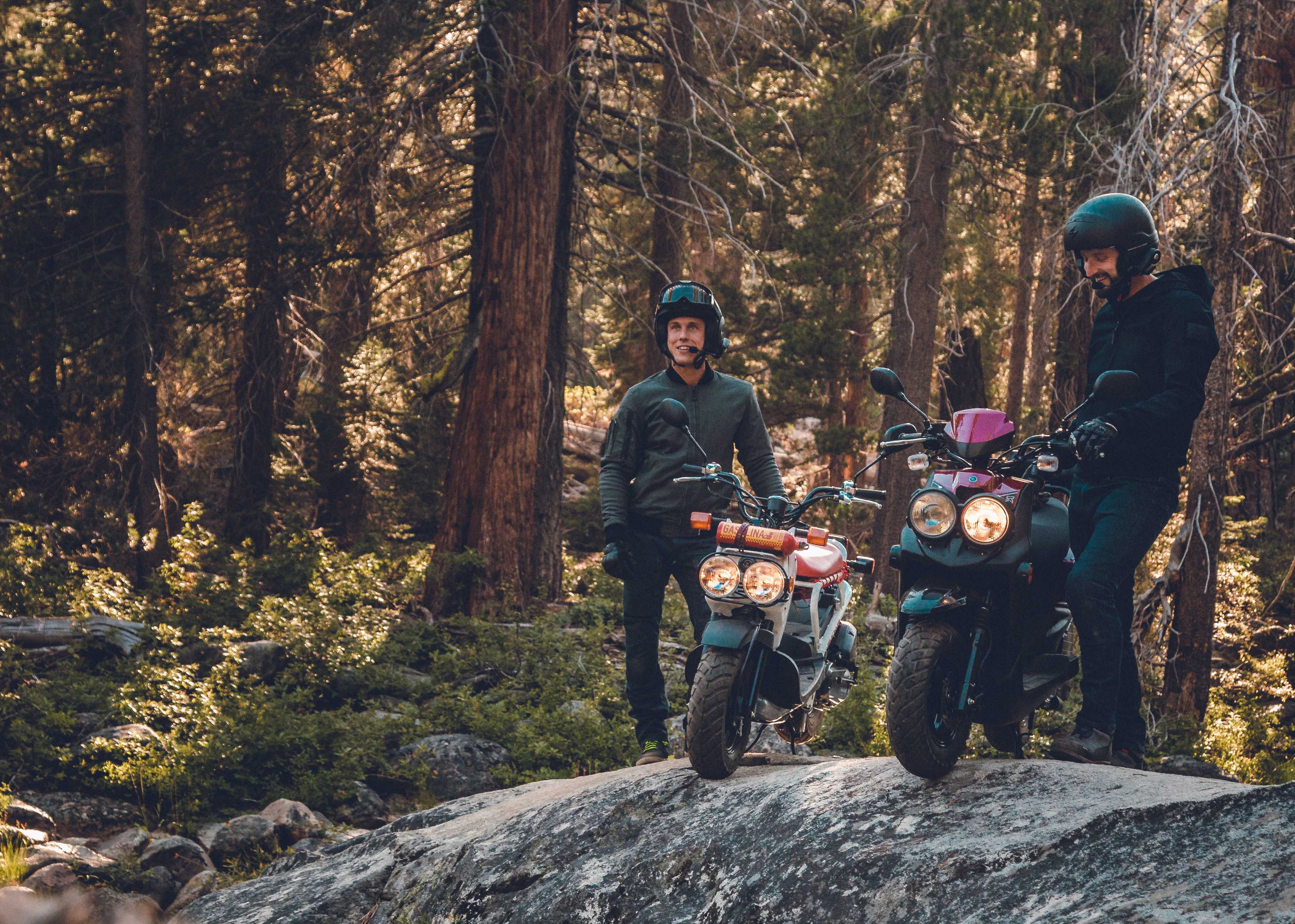
I feel like that's just a great move for motorcycling, in general, to have smaller, and more approachable, and more affordable bikes to get more people into riding. I think that's a super important step.
SD: Between your articles, your wrenching, your how-tos, your use of social media and creating some wildly engaging videos, you've really become an extremely influential person in the motorcycle community. If you could offer up just one piece of advice for a new rider or for someone who's looking at getting into riding, what would that be?
AH: Wow. One piece of advice? That's a hard one to do off the cuff, I would really need to chew on it a little bit. I guess it's a little package of advice. Buy a small bike, buy a used bike, take rider training, wear the right gear, and do your research.
I mean, do it, get into it, give it a try. There's nobody I've ever met that's ridden a motorcycle and has been like, "No, that wasn't fun, I don't want to do that." People have their financial reasons, they have their risk reasons, they have a lot of reasons why they don't do it, but no one ever rides a motorcycle and thinks it's boring. That doesn't happen.
It's influenced so many aspects of my life, and it's what I do for fun, and it's what I've been fortunate enough to do for a living. So, for me, motorcycling is a great gig.






